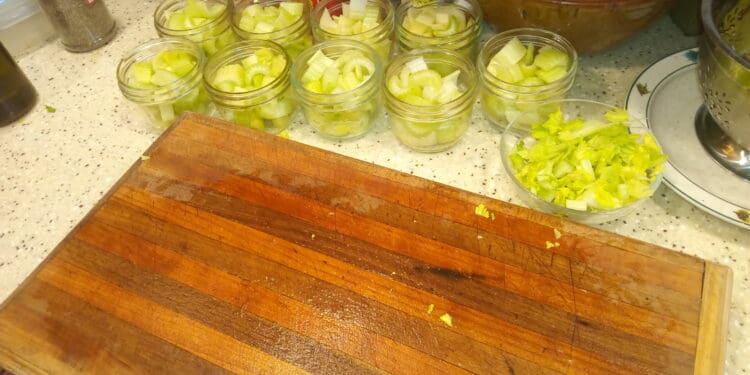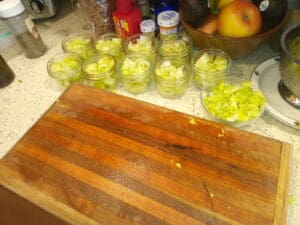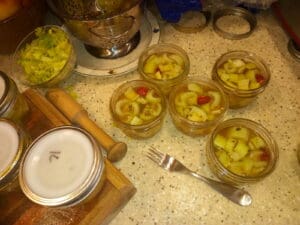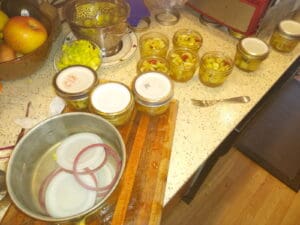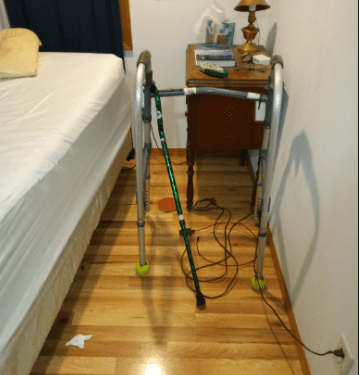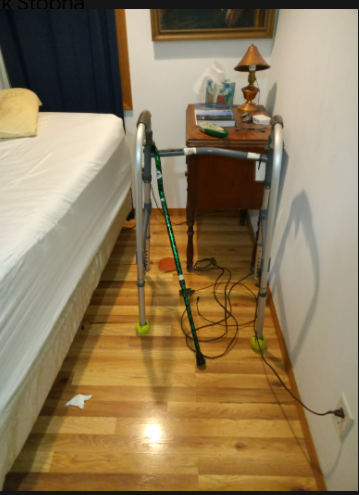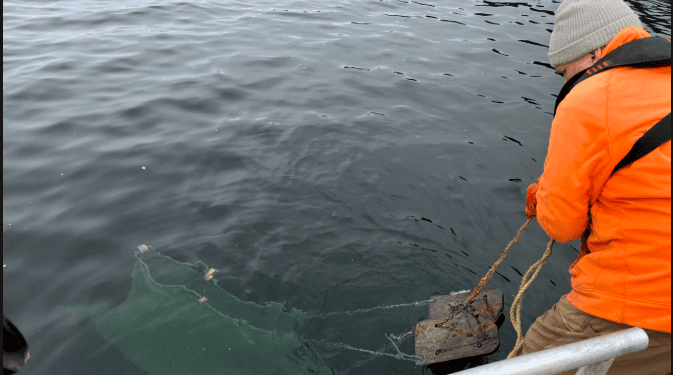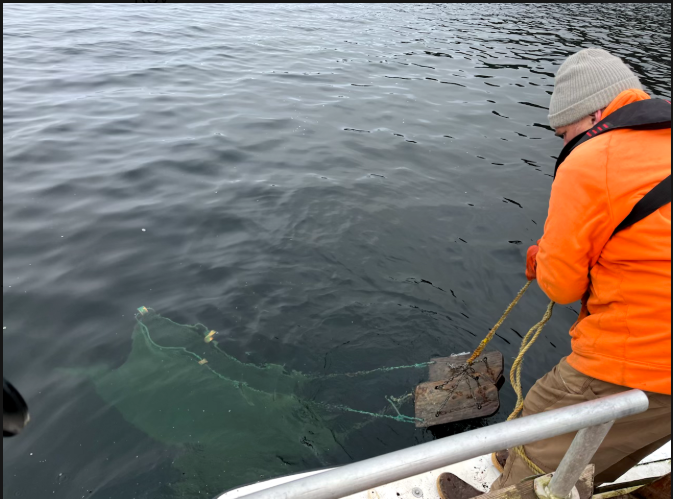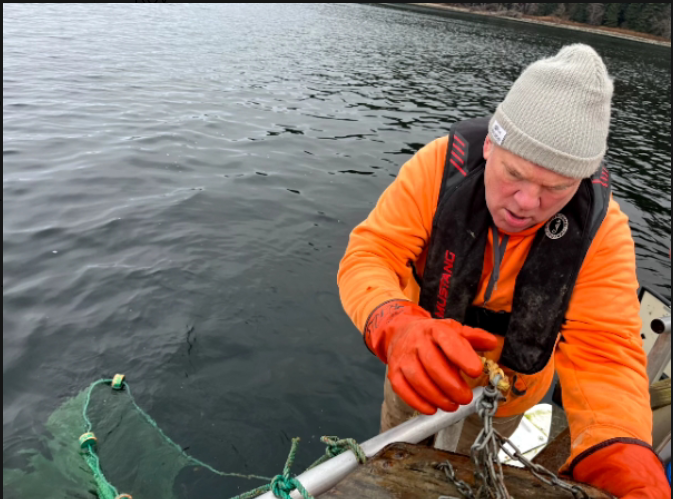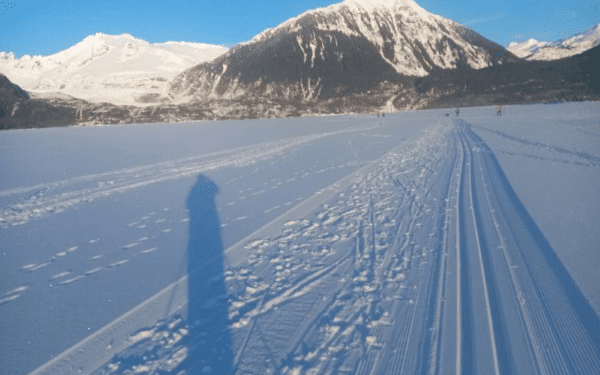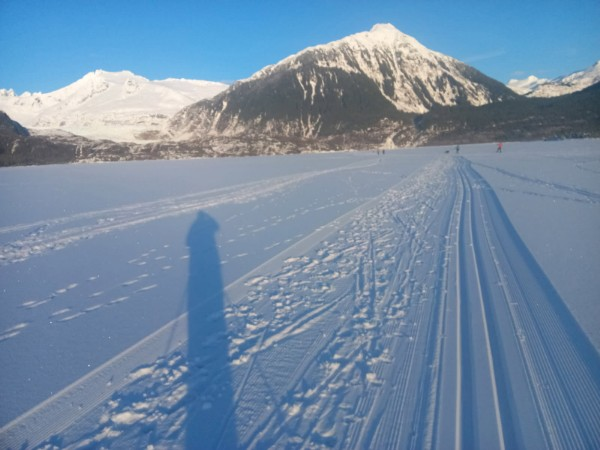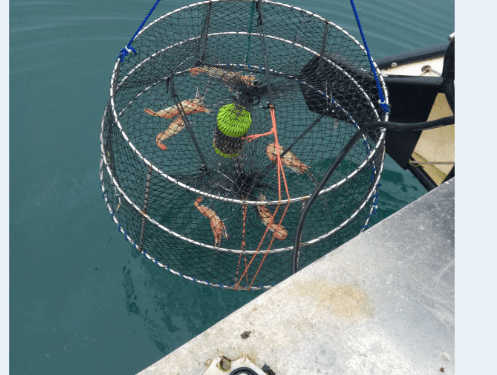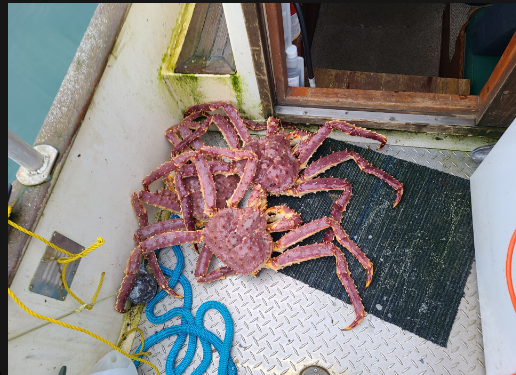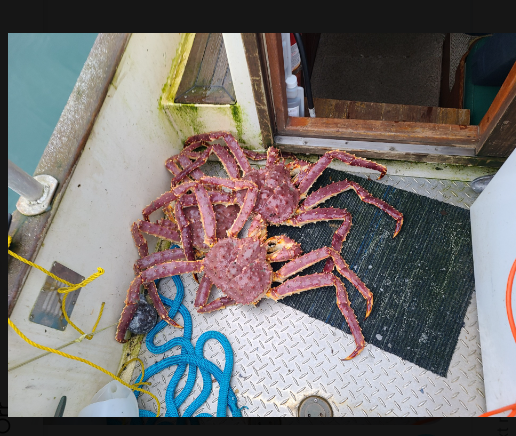Kurt and I watched the weather to make an 8 hour run in the Jeanne Kay to do some winter boat camping. We were after shrimp and crab, and would do a little king salmon trolling on the way home. Nick and Amanda showed me how to work a shrimp trawl last summer, and it’s now one of my favorite ways to fish.
We watched the weather, especially since there’s little help close by that far from town this time of year. The barge lines and a few trappers are about the only winter boaters. The forecast called for 15 knots day one, then 10 knots days 2 and 3 of our planned trip. There were places to hide if the weather came up. Temperatures were around freezing and perfect for keeping seafood.
We left town about 7 am with a crescent moonlight. I wanted to get down to our destination before dark so we could set our pot gear and get anchored before dark.
We turned into the destination bay late in the day. I was surprised to see another boat when we turned the corner. A bigger aluminum boat with sodium lights glaring from the bow roof was anchored in a cove. I saw a man walking the beach with purpose. I was puzzled why he was anchored on the side of the channel facing the wind, then understood from experience: he was trapping. I saw him return up the beach with a cart of something – probably bait. Wow. This is some pretty remote trapping, I thought. I guessed he was after marten, wolverine and wolf. He anchored near us that night, and we saw him going from cove to cove checking his traps the next day. I wish I could have talked to him about how he was doing in this trapper’s dreamland.
We set the shrimp pots first. It was my first time setting shrimp pots. Nick gave me some general advice on where to set. Then Kurt picked a point, and we set there, using some floating line I borrowed from Chris. I only have 3 shrimp pots, and we longlined them. I grabbed a bucket of shrimp bait left at the harbor free pile last year, and I finally got to use it. I set the string out while Kurt ran the boat.
Next we set some dungeness and king crab pots up the bay. We anchored right at dark, and settled in for the night. Kurt is always the meals guy on our trips. He brought what has become a standard dinner of bison burgers, with a topping of balsamic vinegar and onion condiment he got from Coleen’s shop. Great combo.
We were up and moving at daylight on day 2. We checked all the pots first, so if we weren’t doing anything in their locations, we could move them. We started with the shrimp pots. I ran the little electric hauler Dougie gave me when he moved fulltime to Bethel, where he’d never use it. It sits on a standard Scottie downrigger mount, and although it looks kind of flimsy, it actually works fine for our scale of fishing. The puller is not going to pull a commercial king crab pot, and won’t like pulling a commercial dungeness crab pot, but it pulls our lighter “sport” gear just fine.
Up and up comes the line we borrowed from Chris. After a minute or three, we get the first 50 fathoms up, and here comes the first anchor. I take it off, and soon the first pot shows coming up from the depths. Astonishingly, we have some spot prawns in it! The biggest I’ve ever seen. About 8 to 9 inches long!
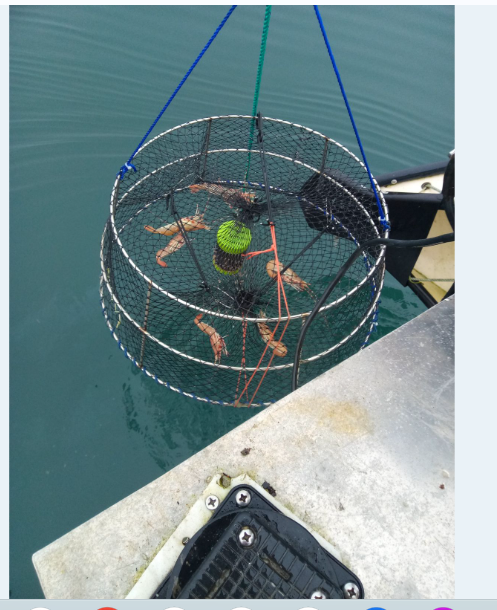
They might not look all that big in the photo, but here’s one of them alongside the crab measuring device. The gap above the prawn is the 7 inch king crab ruler.
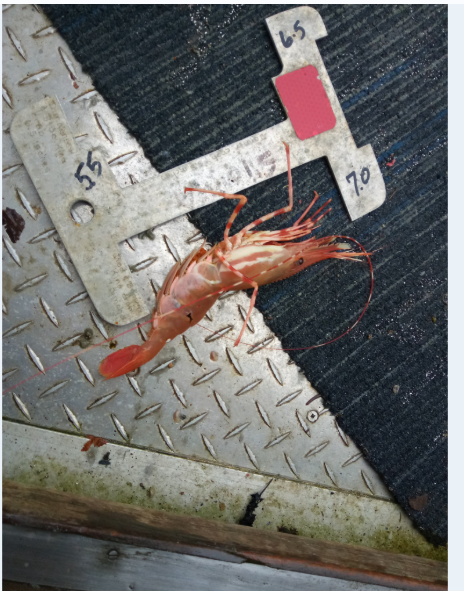
The next 2 pots were about the same. Not a lot in numbers, but holy cow, big shrimps!
Next we checked the crab pots. We caught quite a few tanner and king crab, but only one king crab was a keeper (a male minimum 7 inches across the body shell), and a tanner or two (male minimum 5.5 inches across the body shell). Again, my Pulitzer prize photography makes the crab look small as it’s in the bottom of a line barrel, but that’s them.
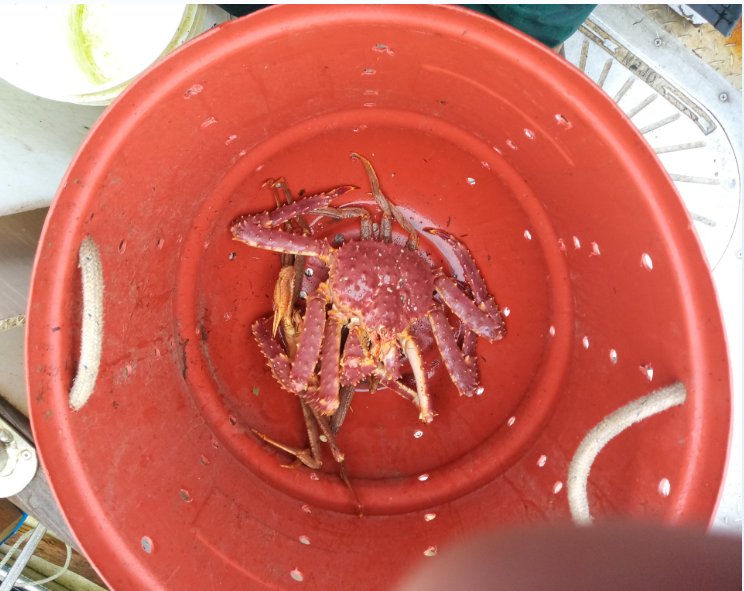
We reset pots to try for more legal sized crab, then got the shrimp trawl out and got trawling. Kurt wasn’t all that enthused about trawling – he was more about the crabbing – but he’s always game and a good skipper or deckhand whenever you need him. I got the net out of the action packer tote. The first time I tried shrimp trawling my own net with Nick and Amanda (with Charlie and Amy aboard), we snagged the net on the bottom and lost it. Amanda had a friend (who we later figured out was a mutual friend as often happens in a small city) who had a trawl he wanted to sell, and which I bought. The trawl net was from Memphis Net and Twine (where everyone I know gets their trawl nets), and their smallest net configuration, I think. The “doors” that keep the net open were much smaller than the doors on the net that I lost. And that made the new net much easier for a beginner to work, and I like it better than the net I lost.
I got reacquainted with the trawl net and its configuration. The doors on either side of the trawl net have a line that leads back to a junction – a double ended swivel eye hook- where both caribeners at the end of the door lines are attached. A ~ 10 lb cannon ball is attached at this junction as well. The tow line is tied to the other end of the double ended swivel eye hook.
When I got ready to set the net, Kurt told me to get my life jacket on. Capital idea! Then I explained to Kurt what we’d be doing, got him lined up at the helm, then started barking out instructions for forward or neutral as I set out the net from the swim step. In the absolute wilderness, I should mention. With mountains all around. That’s why they’ll bury me here.
I payed out the two door lines, then the tow line. I asked Nick how much tow line you pay out in relation to the depth you’re fishing, and the answer was 3 or 4 to 1 – leaning towards 4 to 1. So I when I started paying out line, I regularly asked Kurt what our depth was. When I payed out enough tow line for the depth we were fishing,, I snubbed the tow line to the cleat. I asked him what our speed was. 1.7 knots, he said. That seemed faster than I remember with Joe, so I payed out a bunch more tow line. Speed, I asked? Still 1.7 knots. Well, I thought, we’ll just keep going at this length of tow line at this depth, and see how it goes.
A half hour later, I had Kurt turn the boat around so it was heading towards the net, and that made hauling back the tow line alot easier on me and the hauler. When we got to the net, Kurt put the engine in neutral, and came to the back deck to see what we’d caught. I hauled up the net to the swim step. When I had about 2/3 of the net on the step, I saw we’d caught some sticks and some crab. Thinking that was it, I hauled the rest of the net over the step. OOOOHH! A cod end full of shrimp! We are shrimpers, I said!
I learned from my last trip with Joe to have a bucket ready to dump the catch into, and then reset the net and continue fishing while you sort the catch. I cut a 30 gallon pepper barrel I got somewhere in half, and drilled drain holes in the bottom and sides of it. We tossed the crab from the top of the net overboard, then lifted the cod end of the trawl net into the barrel, untied the cod end line, and dumped the catch into the barrel. Then Kurt lined up the boat to trawl new water on the opposite side of the channel, and I reset the net.
I sorted through the catch, which, while mostly shrimp, also contained small fish, small crab, and sea urchins. I sorted through the catch and returned everything that wasn’t shrimp. We caught mostly pink shrimp, with a few of the larger coon stripe shrimp. I went inside and got a cup of coffee to warm up, and soon it was time for the second haul.
After towing for about 20 minutes, we snagged on something, which stopped the boat. It’s not like you can notice you’ve stopped. You just see your speed go to 0.0 knots. Kurt turned the boat back to the net while I hauled the tow line in. When we got close to the end of the tow line, the line was tight, then it gave slack. I knew we’d freed the net.
We weren’t expecting as much on this haul since we’d had to haul in early. When we got the net up, we saw we’d done just fine. With lots more coon stripe and some spot prawns than the first tow. We got the catch into the barrel and reset the net, then I sorted the catch.
After sorting the catch, I headed inside the wheelhouse for more coffee. It was getting dark – 330 pm ish, We wanted to check the crab pots, and move them if they were in non-productive ground. Kurt turned back to the net, and I started hauling the tow line. Nick told me that there was a “habitat change” in this location. Now I knew what he meant. The top of the net was full of rocks and some kind of sponge or coral. The cod end held a nice catch of pink, coon stripe and spot shrimp. It took us awhile to get out the rocks and other debris. Then we dumped the cod end into the barrel. Kurt headed the boat to the crab pots across the bay in the waning daylight.
We checked the pots, and no keeper king crab or tanner crab. We moved to new locations. Then we anchored in 20 feet of water, sat down in the galley, and relaxed. That was a full day. Sunrise to after sunset. A good 8 hours of fishing. Kurt served up another dinner of bison burgers, and nobody complained. Man, that’s good stuff. I figured out how to use my new In Reach. I texted Sara and others we were all anchored, and the results of our day. What an age we’re living in.
We were up at dawn on day 3. I checked the coolant and the oil, started the Yanmar, and pulled the anchor with the. We pulled and stacked all the crab pots, catching a tanner crab. We pulled the shrimp pots, and got about half as many as the day before. The prawns were just as huge as day 2. Then we steamed for home.
Kurt was at the helm while I got to figuring out what to do with all the pink shrimp. We decided to cook them whole. I put water on to boil. When the water was steaming, I dumped in a load of pinks. Within a minute or two, shrimp started to float to the top. I dumped the pot of steaming shrimp into a colander suspended in a large bowl. I then put moved the colander full of shrimp to the sink, and returned the water to the pot on stove. I took the steaming shrimp to the back deck, put the shrimp in a bowl, and ran sea water into the bowl to cool the shrimp and halt it cooking.
I repeated this procedure the rest of the way home. I finished cooking the pink shrimp about an hour from the harbor. In the meanwhile, we also trolled for king salmon. We didn’t see a strike, but when Kurt pulled up the rods to quit fishing, we had a shaker on one of the lines.
As nightfall came, Kurt asked if I had bow lights so he could better watch for logs while cruising to Auke Bay. I did, I said. I put both bow lights on. I rarely use the lights, so this was a good opportunity to adjust them. With Kurt at the helm, I got out to the bow and adjusted the lights so they were pointed in the optimum direction.
We arrived in Auke Bay, tied up, and loaded the catch in my folding cart to take to the car. We’d move gear off the boat tomorrow. Kurt lost his truck and house keys somewhere, but he had a spare house key he could use at his residence, so I dropped him off and we’d look for the keys tomorrow. I made him take half the prawns and coon stripes and the king crab, as he tried to refuse it all. Such is the customary dance amongst Alaska best friends.
I picked Kurt up the following morning. We had had such a good trip I was confident we’d find his keys. When we got to the boat, Kurt looked aft while I looked forward. First I found his boot traction grippers. Then there they were. Right behind the fire extinguisher in the forecastle. His keys! We were on a roll.
We hauled back barrels of line to the truck, and I got home in time to start processing the shrimp while watching the NFL semifinals.
I processed the raw coon stripe and spot prawns, but what to do with the cooked whole pink shrimp. I first removed the heads, then peeled out the meat from the tails. That worked on the larger pinks, but the smaller tails it was really hard to mush out the meats. Wow, was it a slog. I started to peel only the tails of the larger pink shrimp, and sort the tails of small shrimp to another pile to figure out what to do with them later.
All the while, I watched my Bills lose to the Chiefs. The Bills played their hearts out. They should have lost last week to the Ravens, but won. They should have won this week to the Chiefs, but lost. I remember being in my mud brick-walled, thatch-roofed house in Sierra Leone in 1988 (?), listening on Armed Forces Radio by shortwave radio, at 330 or so in the morning, to the Bills lose their first Super Bowl to the Giants on the wide-right field goal try. Then three more losing Super Bowl appearances in a row. Followed by decades of suckage. It’s good to have them back to respectability. I sure miss Paul. I’d have been calling him after the game, lamenting how close my team came to going to the show.
In the meantime, I thought about how I’d seen shrimp used in Ecuador, where they pulled out the meats, then used a blender to grind up the shells for a broth to make ceviche. I asked Sara about processing the shrimp into a paste or ceviche or something. She said what about cooking the tails with the shell on in tempura batter like they make popcorn shrimp? Well, that was genius.
She got the tempura batter together, and the hot oil going. She battered the pink shrimp tails, dropped them in the hot oil, and I tended the fare. When they were browned on both sides, I scooped them from the oil, let them cool in a colander lined with paper towel, and we each tried them. Good! That was an attitude changer for me. Separating the heads from tails was easy, but removing the shell from the tail was a pain in the ass, and many times, it just squashed in my fingers. Now we had an answer.
As the evening wore on, we got to divvying up the bounty with our friends. During these conversations, Sara said she wanted to try what I’d seen in Ecuador, and make some soup. I put a few quarts of the whole cooked pink shrimp in the blender, added some water, and Sara whirled it into a puree. She added mushrooms and some other stuff, and had me taste. Shrimp bisque. And really good. Now we have two dishes to make with pink shrimp that are less painful than peeling the tails.
I got shrimp and crab divided up for Sara’s staff and our friends. I vacuum packed what was left for our freezer. I told Sara I sometimes lament that I’ve given away more than I’ve kept for ourselves until I open the freezer to put our share in there and look at all the bounty that’s already in the freezer and how will we ever eat it all.
So, a memorable banner trip winter camping and lots of lessons learned.

